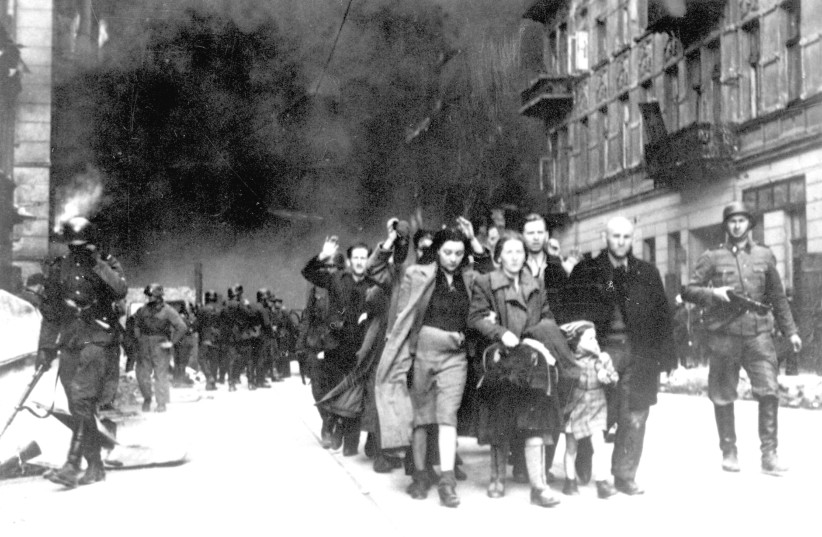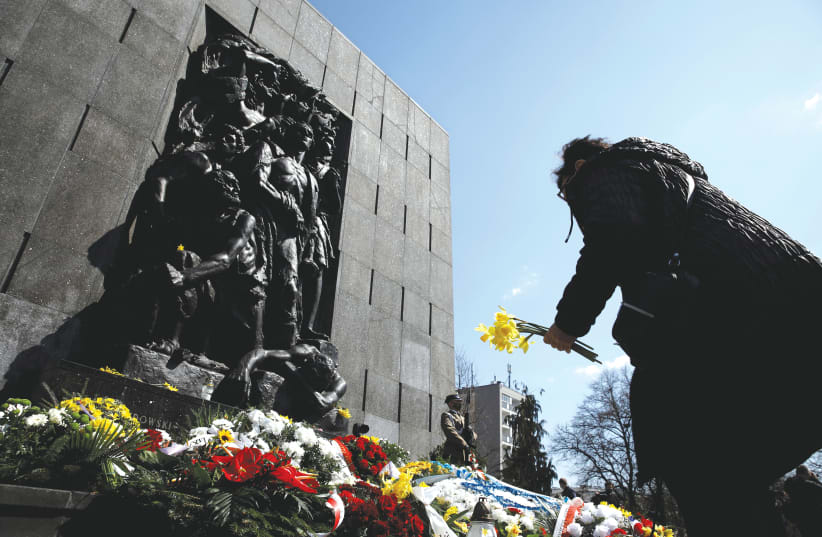"They did it only for one purpose, the dignity of the Jewish people,” (Prime Minister Menachem Begin).
This year marks the 80th anniversary of the Warsaw Ghetto Uprising. On April 19, 1943, Nazi forces entered the Warsaw Ghetto with the stated objective of rounding up and deporting all Jews there to death camps, but were attacked by organized Zionist fighters. That Holocaust Remembrance Day was created by the Israeli government to be near the anniversary of the uprising on the Jewish calendar was the correct choice.
Two main armed resistance organizations
There were two main armed resistance organizations in the ghetto that acted independently – the ZZW (Jewish Military Organization) and ZOB (Jewish Fighting Organization). Today, the leader of the Zionist armed resistance who is most often remembered is Mordechai Anielewicz, commander of the ZOB. The ZOB was an alliance of both Zionist and non-Zionist youth organizations that were mostly left-leaning.
By contrast, ZZW had leaders and fighters who came from Betar, the right-leaning Zionist youth organization and their allies, including Jewish veterans of the Polish Army. ZZW’s fighters in the Warsaw Ghetto Uprising have been largely written out of history by those who opposed it for decades, because of Betar’s ties to Likud and because it was founded by Ze’ev Jabotinsky. Anielewicz himself had received training in Betar as a young teenager and left the organization before the war.
Moshe Arens (1925-2019), the former Israeli defense minister who was a senior Betar leader in the US in his younger years, wrote Flags Over the Warsaw Ghetto (Gefen Publishing, November 2011) on the ZZW’s heroic battle against the Nazis in the ghetto.


The book, and the many articles Arens wrote about the ZZW published in The Jerusalem Post, Yad Vashem Studies and Haaretz, helped create a far more accurate account of the ZZW’s participation in the uprising. The book and the articles also did much to recall the heroism of Pawel Frenkel, ZZW’s frontline commander.
The ZZW is now known to have been the better-equipped fighting force in the ghetto, as it had procured machine guns. Arens also writes that the ZZW had more fighters.
The groups finally decided to coordinate their efforts in the very last hours before the April 19 battle began. For 28 days, Jewish warriors fought the enemy and showed Jewish bravery perhaps not seen since the days of Bar Kochba’s uprising against Rome. Sporadic attacks on Nazis continued by ghetto fighters who hid in bunkers beneath the ghetto’s rubble until the Warsaw Uprising began in August 1944. The ghetto fighters killed hundreds of Nazis.
One reason to continue to remind the public about the uprising is that some want its importance minimized, or worse. For example, in December 2013, Haaretz published an article with the headline, “The Warsaw Ghetto myth.”
IT SHOULD be impossible to speak about the Warsaw Ghetto Uprising without talking about Jabotinsky, the founder of Betar, even though he was not there. Jabotinsky (1880-1940) was a Zionist leader, orator and writer who founded the Jewish Legion during World War I, as well as the Hagana self-defense units in Jerusalem in 1920. In 1923, he founded Betar. Prime Minister Benjamin Netanyahu’s father, Benzion, served as Jabotinsky’s personal aide just after the outbreak of World War Two and traveled with him internationally.
Jabotinsky’s words and ideas animated a generation of young Jews to resist the Nazis, rescue fellow Jews from Hitler’s forces, and fight for the freedom of Israel as soldiers in the Irgun and Stern Group.
Before Begin became prime minister, official commemorations of Jabotinsky were rare. Since 1977, the situation has fundamentally changed: Not only Begin’s Likud, but also many parties to both its right and its left have all connected themselves directly to Jabotinsky’s legacy.
This year’s 80th anniversary of the Warsaw Ghetto Uprising is a reminder of Jabotinsky’s vital contributions. And this is no small thing. The ideology of Jabotinsky is just as instructive and relevant now as it was many decades ago.
For today’s Zionists to be truly successful in a way that transcends politics and elections – in a nation-transforming way – we must reevaluate the philosophy of the heroes who fought against the Nazis in the ghetto and also fought for the establishment of the State of Israel. These heroes were not only Jabotinsky’s ideological heirs, but the champions who brought Jabotinsky’s deepest hopes into reality.
Studying Jabotinsky’s ideas about Jewish pride, activism, devotion to duty and unapologetic Zionism is one way to honor the Warsaw Ghetto Uprising. Perhaps the best way.
The writer is a commentator on Jewish affairs. He was a US delegate to the 38th World Zionist Congress in 2020.
